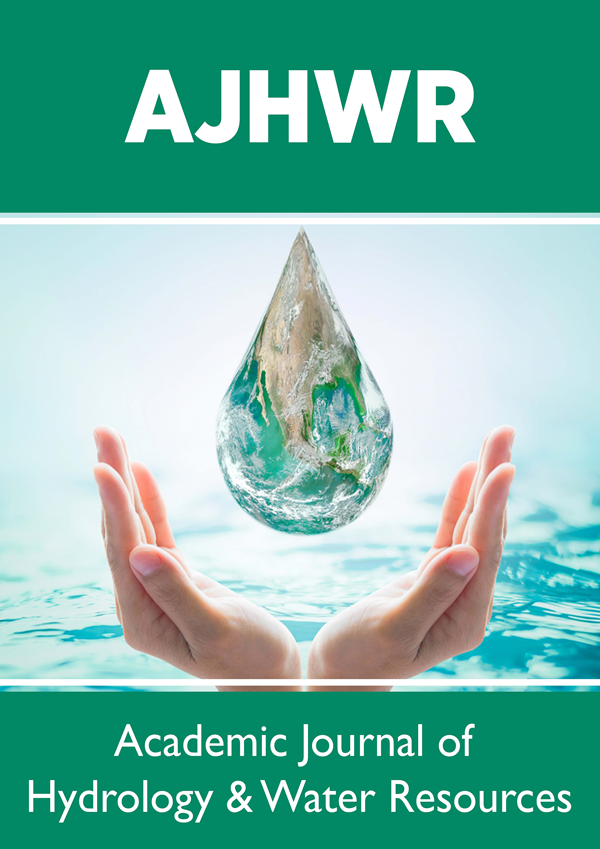Lupine Publishers Group
Lupine Publishers
Menu
Review Article 
Nalgonda Technique is an Ideal Technique for Defluoridation of Water: its use can Prevent and Control Hydrofluorosis in Humans in India Volume 1 - Issue 1
Shanti Lal Choubisa1,2*
- 1Department of Advanced Science and Technology, National Institute of Medical Science and Research, NIMS University Jaipur, Rajasthan, India
- 2Former Department of Zoology, Government Meera Girls College, Udaipur, Rajasthan, India
Received: July 05, 2023 Published: July 13, 2023
Corresponding author: Shanti Lal Choubisa, Department of Advanced Science and Technology, National Institute of Medical Science and Research, NIMS University Rajasthan, Jaipur, Rajasthan 303121, India and Former Department of Zoology, Government Meera Girls College, Udaipur, Rajasthan 313001, India
Abstract
- Abstract
- Introduction
- Nalgonda Technique
- Mechanism Involved in Defluoridation of Potable Water
- How is This Technique an Ideal and Efficient Technique?
- When Can this Technique be Used?
- Defluoridation at Domestic Level
- For the Prevention and Control of Hydrofluorosis
- Conclusion
- Acknowledgements
- Declarations
- References
India is one of the countries where water-borne fluorosis (Hydrofluorosis) disease is hyperendemic which develops from drinking fluoridated water. This disease is more prevalent especially in the rural areas of the country. > 90% of drinking groundwater sources, hand-pumps, bore-wells, etc. are naturally contaminated with varying amounts of fluoride. In the country, groundwater of 23 out of 37 states and union territories is found to be fluoridated and in most of the rural areas have fluoride above the acceptable limit of 1.0 ppm or 1.5 ppm. Consumption of such water for both drinking and cooking for prolonged time is not safe for human health and causes dental mottling (dental fluorosis), skeletal deformities (skeletal fluorosis), and adverse changes in soft organs (non-skeletal fluorosis). According to the National Programme for Prevention and Control of Fluorosis (NPPCF), the population at risk based on population in habitations with high fluoride in drinking water is > 11.7 million in the country. Therefore, providing fluoride-free drinking water is more important and necessary for the prevention and control of dreaded hydro fluorosis disease in the population. For this, Defluoridation technique has been developed by the National Environmental Engineering Research Institute (NEERI) in India, through which fluoride free water can be easily prepared. The name of this technique is “Nalgonda technique”. This technique can be used at both household and community level. In this technique, three basic chemicals, namely aluminium salts, lime, and bleaching powder are used for removing fluoride and getting cleaned potable water. The quantities of these chemicals are used in a scientific way for getting water having acceptable limit of fluoride (1.0 mg F/l). In the present review, how this technology is ideal and efficient for water defluorination and its basic mechanisms and utility in the prevention and control of hydro fluorosis in India are briefly focused on.
Keywords: Defluoridation; Dental fluorosis; Fluoride; Hydrofluorosis; Nalgonda technique, non-skeletal fluorosis; Raw or potable water; Skeletal fluorosis
Introduction
- Abstract
- Introduction
- Nalgonda Technique
- Mechanism Involved in Defluoridation of Potable Water
- How is This Technique an Ideal and Efficient Technique?
- When Can this Technique be Used?
- Defluoridation at Domestic Level
- For the Prevention and Control of Hydrofluorosis
- Conclusion
- Acknowledgements
- Declarations
- References
Water-borne disease, namely Hydrofluorosis is a worldwide public health problem and is endemic in more 125 countries [1]. India is also one of the countries where the Hydrofluorosis disease is highly endemic and more prevalent especially in rural areas [2,3]. In fact, this dreaded disease in the rural communities is mainly due to drinking fluoride contaminated water. According to the survey, 42.9% of households in rural areas use water (groundwater) of hand- pumps and bore- wells as their main sources of drinking water, while 40.9% of households in urban areas use piped or surface water as their main source [4]. Interestingly, in rural areas of India, > 90% of drinking groundwater sources are naturally contaminated with varying amounts of fluoride [5]. In the country, groundwater of rural areas of 23 out of 37 states and union territories is found to be contaminated with fluoride or fluoridated. Among these, 70- 100% districts in the states of Andhra Pradesh, Gujarat, Rajasthan, and Telangana and 40-70% districts in the rest of the states have fluoride-contaminated groundwater and having fluoride above the maximum permissible or safe limit, > 1.0 ppm or 1.5 ppm [1,6,7]. Prolonged use of such water for drinking and cooking is not safe for human health [8] and causes the disease hydrologists [1,9-18]. If domestic animals drink such fluoride contaminated groundwater frequently for long time, then this disease also appeared in them [19-32]. Irrigation of fluoride containing water in agriculture is also harmful to agriculture crops [5].
It is well known, in the human body, ingested fluoride through drinking water is absorbed by digestive system and ultimately reaches various organs through blood circulatory system. More than 50% absorbed fluoride is excreted from the body through excretory products and perspiration, while the rest of fluoride is retained in the body where it accumulates gradually in the various organs. However, its maximum bioaccumulation occurred in the calcified tissues, bones and teeth as compared to their counter parts [1,33]. In people, chronic fluoride intoxication (fluorosis) causes weakening, discoloration, and light to dark brown staining of the teeth (dental fluorosis), while they also become crippled and bent (skeletal fluorosis) due to various bone changes [33]. Apart from these, many types of health problems (non-skeletal fluorosis) such as gastro-intestinal discomforts, anaemia, body weakness, polydipsia, polyuria, repeated abortion, impaired reproduction and endocrines, neurological disorders, etc. also develop in people of all age groups from drinking of fluoridated water [1,33]. Although these fluoride- induced health problems are temporary, these are significant and helpful in the diagnosis of chronic fluoride intoxication not only in humans [33] but also in domestic animals [34]. Interestingly, due to the easy availability of water from hand-pumps and borewells, the villagers or people also started feeding water from these water sources to their domesticated animals, due to which domesticated animals also started getting Hydrofluorosis disease in India [19-32]. However, the severity and prevalence of Hydrofluorosis depends on chemical constituents of water and many other factors other than the amount of fluoride in the drinking water [35-42].
In India, according to the National Programme for Prevention and Control of Fluorosis (NPPCF), the population at risk based on population in habitations with high fluoride in drinking water is > 11.7 million in the country [43]. However, NGOs and scientists have warned that the threat is far more widespread, affecting more than 60 million people. Therefore, there is a great need to prevent and control Hydrofluorosis in rural areas of the country, which is possible only when people have regular access to fluoride-free water. For this, several techniques or methods such as chemical (precipitation processes, contact precipitation, coagulation techniques, and electrocoagulation), membrane (electrodialysis, reverse osmosis, and nanofiltration), distillation (solar and membrane distillation), adsorption (activated alumina, clay adsorbents, ion-exchange resins, metal: organic frameworks, carbonaceous adsorbents, biosorption, and layer double hydroxides), phytoremediation, etc. have been developed for Defluoridation (removal of fluoride) of raw or potable water [44-48]. These techniques are classified broadly as chemical, physical, and membrane-based or adsorptive. However, in India, the National Environmental Engineering Research Institute (NEERI), Nagpur, has developed and recommended a method referred to as the “Nalgonda technique” which is an ideal and efficient technique for water Defluoridation [49]. This technique is based on chemical methods and can be used at both the household and community level. In the present review, how this technology is ideal and efficient for water defluorination and its basic mechanisms and utility in the prevention and control of Hydrofluorosis in India are briefly focused on.
Nalgonda Technique
- Abstract
- Introduction
- Nalgonda Technique
- Mechanism Involved in Defluoridation of Potable Water
- How is This Technique an Ideal and Efficient Technique?
- When Can this Technique be Used?
- Defluoridation at Domestic Level
- For the Prevention and Control of Hydrofluorosis
- Conclusion
- Acknowledgements
- Declarations
- References
In simple terms, Defluoridation is the removal of excess fluorides from water which can be achieved by precipitation and complexation or fixed bed regenerative activated alumina process. In India, NEERI has developed a technique by which fluorides can be removed from water by precipitation and complexation method which is called or named as “Nalgonda technique” [50]. This technique is comparatively simple as well as economical.
In this technique, basically three chemicals, namely aluminium salts, lime, and bleaching powder are used and added to raw or fluoridated water followed by rapid mixing, flocculation, sedimentation, filtration, and disinfection processes. The aluminum salt (alum) may be added either in the form of aluminum sulphate [Al2 (SO4)3] or aluminum chloride (AlCl3) or a combination of both. In the process of defluorination, only alum is responsible for removing fluoride from water. However, the selection of these salts depends upon the sulphate and chloride content of the raw water so as not to exceed their permissible limits. The amount or dose of aluminum salts increases with an increase in the fluoride and alkalinity levels of the raw water. The dose of lime (CaCO3 or CaO) is empirically 1/20th that of the dose of aluminium salt. In fact, lime facilitates the formation of dense floc for rapid settlement. Bleaching powder [Ca (OCl)2] is added to the raw water at the rate of 3mg/l for disinfection. In this method, quantity of alum is added to the raw water in a certain proportion so that the fluoride level in this water comes down to an acceptable level (1.0 mg/l). It all depends on the fluoride and alkalinity level of this water which is shown in (Table 1).
Mechanism Involved in Defluoridation of Potable Water
- Abstract
- Introduction
- Nalgonda Technique
- Mechanism Involved in Defluoridation of Potable Water
- How is This Technique an Ideal and Efficient Technique?
- When Can this Technique be Used?
- Defluoridation at Domestic Level
- For the Prevention and Control of Hydrofluorosis
- Conclusion
- Acknowledgements
- Declarations
- References
This technique is very simple and can be easily understood and handled by a common man. This technique is a combination of several unit operations and processes involving rapid mixing, chemical interaction, flocculation, sedimentation, filtration, disinfection, and sludge concentration to recover both water and aluminum salts. All the basic operations of this technique are shown in (Figure 1).
Table 1: Approximate alum dose (mg/l) required to obtain acceptable limit (1.0 mg F/l) of fluoride in test or potable water at various alkalinity and fluoride levels. Source: [49].

Rapid mixing:
It is the first step of Defluoridation of raw or fluoridated water. In this step, the basic chemicals, lime (alkaline), aluminum salt (alum) and bleaching powder are added when the potable or raw water enters the Defluoridation system or container.
Flocculation and chemical interaction:
Thereafter the water is thoroughly stirred by flocculators before entering the sedimentation tank. During flocculation, there is a close interaction between the fluoride in the water and the polyalanine species formed in the system and equilibrium is achieved. In fact, flocculation removes not only fluoride from potable or raw water but also turbidity, colour, odour, pesticides, and organic matter. During flocculation bacterial load is also reduced significantly due to presence of bleaching powder. All of these are caused by adsorption on the floc. Lime or sodium carbonate ensures sufficient alkalinity for effective hydrolysis of aluminum salts, so that residual aluminum does not remain in the treated water. Simultaneous disinfection is achieved with bleaching powder and keeps the system free from undesirable biological growth.
Sedimentation:
The treated water is transferred to a sedimentation tank where flocs containing fluoride, turbidity, bacteria, and other impurities are allowed to settle down. The supernatant water with a low concentration of suspended solids is transferred to the filter tank.
Filtration:
For proper filtration, rapid gravity sand filters are recommended by NEERI to get settled water. These filters usually contain unscented gelatinous flocs. Residual fluoride and microbes are adsorbed on the gelatinous flocs placed on the filter bed.
Disinfecting and distribution of water:
Finally, the filtered water is collected in a storage water tank. Before distributing this water, it is re-chlorinated so that there is no infection in it.
How is This Technique an Ideal and Efficient Technique?
- Abstract
- Introduction
- Nalgonda Technique
- Mechanism Involved in Defluoridation of Potable Water
- How is This Technique an Ideal and Efficient Technique?
- When Can this Technique be Used?
- Defluoridation at Domestic Level
- For the Prevention and Control of Hydrofluorosis
- Conclusion
- Acknowledgements
- Declarations
- References
There is no doubt that this “Nalgonda technique” is an ideal and efficient technique for Defluoridation of fluoridated or potable/ raw water. Although this technique has many merits, but the main merits are as follows, which confirm it to be ideal, efficient, and effective: this technique is highly efficient removal of fluorides from water having 1.5 to 20 mg F/l up to desirable levels (1.0 or 1.5 mg F/ l), chemicals used in this technique are readily available in the market, adaptable both at the household and community levels, flexible up to several thousand m3/d, having very simple design, construction, operation, and maintenance, it provides employment opportunities to the local people, at the same time, it also removes many undesirable impurities such as colour, odour, turbidity, bacteria, and organic contaminants from the water, alkalinity ensures the efficiency of fluoride removal, sludge generated can be converted into alum for use elsewhere, little wastage of water as well as having least disposal problem, no regeneration of media, needs of minimum mechanical and electrical equipment, no energy except muscle power for domestic equipment, and it costs comparatively less or it is economical.
When Can this Technique be Used?
- Abstract
- Introduction
- Nalgonda Technique
- Mechanism Involved in Defluoridation of Potable Water
- How is This Technique an Ideal and Efficient Technique?
- When Can this Technique be Used?
- Defluoridation at Domestic Level
- For the Prevention and Control of Hydrofluorosis
- Conclusion
- Acknowledgements
- Declarations
- References
This technique can be used only when the absence of an acceptable and alternative low fluoride drinking water source within transportable distance or the absence of an alternative source causes rejection limits such as total dissolved solids < 1500 mg/l and fluoride ranging from 1.5 to 20.0 mg/l.
Defluoridation at Domestic Level
- Abstract
- Introduction
- Nalgonda Technique
- Mechanism Involved in Defluoridation of Potable Water
- How is This Technique an Ideal and Efficient Technique?
- When Can this Technique be Used?
- Defluoridation at Domestic Level
- For the Prevention and Control of Hydrofluorosis
- Conclusion
- Acknowledgements
- Declarations
- References
Anyone can easily make raw or potable water free of fluoride by this technique at domestic level. In fact, its method is simple [50]. The method of how water is defluorinated has been shown in (Figure 2). An approximate volume of alum solution (milliliter) required to be added in 40 liters raw or fluoridated water to obtain acceptable limit of fluoride (1.0 mg F/l) in water at various alkalinity and fluoride levels has been depicted in (Table 2).
Figure 2: Defluorination at home or domestic level following the basic principle of Nalgonda technique. Source: [50,51].

For the Prevention and Control of Hydrofluorosis
- Abstract
- Introduction
- Nalgonda Technique
- Mechanism Involved in Defluoridation of Potable Water
- How is This Technique an Ideal and Efficient Technique?
- When Can this Technique be Used?
- Defluoridation at Domestic Level
- For the Prevention and Control of Hydrofluorosis
- Conclusion
- Acknowledgements
- Declarations
- References
Hydrofluorosis disease is endemic in most rural areas of India due to presence of high amount of fluoride in drinking groundwater [2,3,5]. Thousands of children, young, and old men and women drink this water due to which these people are suffering from this disease. Due to this disease, people also become handicapped for life. If these people start getting fluoride-free water, then this disease can be prevented and controlled. Nalgonda technique can prove to be most suitable and effective for this. In fact, by this technique fluoride-free water can be prepared both at domestic and community level which can be used by people or villagers for drinking and cooking purposes. Through this way fluoride exposure can be checked in population. Due to which there is no possibility of hydro fluorosis in people. The special thing is that once this disease has happened or appeared in humans, there is no possibility of its recovery. In fact, there is no cure for this disease. This technique is more useful especially in tribal areas of Rajasthan where fluoride in drinking water sources is found in the range of 1.0 ppm - 21.6 ppm [2,51-61]. But this technique can also be used in any geographical area or country where fluorosis is endemic or the fluoride content in drinking water is found to be above the maximum permissible limit of 1.0 ppm or 1.5 ppm.
Conclusion
- Abstract
- Introduction
- Nalgonda Technique
- Mechanism Involved in Defluoridation of Potable Water
- How is This Technique an Ideal and Efficient Technique?
- When Can this Technique be Used?
- Defluoridation at Domestic Level
- For the Prevention and Control of Hydrofluorosis
- Conclusion
- Acknowledgements
- Declarations
- References
The groundwater of most parts of India is fluoride rich. Most of the rural people use this water for both drinking and cooking. Due to repeated long-term consumption of this water, a disease called Hydrofluorosis is prevalent in these people. This disease is usually seen only in rural areas of the country. This disease can be prevented and controlled by providing fluoride free drinking water to the population. The Nalgonda technique can be used in any area having fluorosis and fluoride in drinking water found beyond the permissible limit. By this technique, fluoride free drinking water can be prepared at both domestic and community level. This is a simple, ideal, efficient, and less expensive technique. Using this, clean and germ-free water can be obtained. However, the success of this technique at the community level requires proper monitoring, maintenance, and correct operation. Apart from India, this technique can be used in any country or geographic region where hydro fluorosis is endemic, and the drinking water contains fluoride above the permissible limit of 1.0 ppm.
Acknowledgements
- Abstract
- Introduction
- Nalgonda Technique
- Mechanism Involved in Defluoridation of Potable Water
- How is This Technique an Ideal and Efficient Technique?
- When Can this Technique be Used?
- Defluoridation at Domestic Level
- For the Prevention and Control of Hydrofluorosis
- Conclusion
- Acknowledgements
- Declarations
- References
The author thanks to Dr. Darshana Choubia, Associate Professor, Department Prosthodontics and Tehreem Siddiqui (B.D.S. student), Geetanjali Dental and Research Institute, Udaipur, Rajasthan313002, India for cooperation.
Declarations
- Abstract
- Introduction
- Nalgonda Technique
- Mechanism Involved in Defluoridation of Potable Water
- How is This Technique an Ideal and Efficient Technique?
- When Can this Technique be Used?
- Defluoridation at Domestic Level
- For the Prevention and Control of Hydrofluorosis
- Conclusion
- Acknowledgements
- Declarations
- References
Funding: No funding was received for this work.
Competing interest: The author has no conflict of interest.
References
- Abstract
- Introduction
- Nalgonda Technique
- Mechanism Involved in Defluoridation of Potable Water
- How is This Technique an Ideal and Efficient Technique?
- When Can this Technique be Used?
- Defluoridation at Domestic Level
- For the Prevention and Control of Hydrofluorosis
- Conclusion
- Acknowledgements
- Declarations
- References
- Adler P, Armstrong WD, Bell ME, Bhussry BR, and Büttner W, et al. (1970) Fluorides and human health. World Health Organization Monograph Series No: 59.
- Choubisa SL (2018) Fluoride distribution in drinking groundwater in Rajasthan, India. Current Science 114(9): 1851-1857.
- Choubisa SL (2018) A brief and critical review on hydrofluorosis in diverse species of domestic animals in India. Environ Geochem Health 40(1): 99-114.
- NSO (2019) Drinking Water, Sanitation, Hygiene, and Housing Condition, National Sample Survey (NSS) report number 584, The National Statistical Office (NSO).
- Choubisa SL, Choubisa D, Choubisa A (2023) Fluoride contamination of groundwater and its threat to health of villagers and their domestic animals and agriculture crops in rural Rajasthan, India. Environ Geochem Health 45: 607-628.
- ICMR (1974) Manual of standards of quality for drinking water supplies. Special report series No: 44.
- BIS (2012) Indian standard drinking water-specification. 2nd revision. New Delhi: Bureau of Indian Standards.
- Choubisa SL (2023) Is drinking groundwater in India safe for human health in terms of fluoride? Journal of Biomed Research 4(1): 64-71.
- Choubisa SL, Choubisa DK, Joshi SC, Choubisa L (1997) Fluorosis in some tribal villages of Dungarpur district of Rajasthan, India. Fluoride 30(4): 223-228.
- Choubisa SL, Choubisa L, Choubisa DK (2001) Endemic fluorosis in Rajasthan. Indian J Environ Health 43(4): 177-189.
- Choubisa SL (2001) Endemic fluorosis in southern Rajasthan (India). Fluoride 34(1): 61-70.
- Choubisa SL (1998) Fluorosis in some tribal villages of Udaipur district (Rajasthan). Journal of Environmental Biology 19(4): 341-352.
- Choubisa SL (1999) Chronic fluoride intoxication (fluorosis) in tribes and their domestic animals. International Journal of Environmental Studies 56(5): 703-716.
- Choubisa SL, Sompura K (2021) Dental fluorosis in tribal villages of Dungarpur district (Rajasthan). Pollution Research 15(1): 45-47.
- Choubisa SL (2012) Fluoride in drinking water and its toxicosis in tribals, Rajasthan, India. Proceedings of National Academy of Sciences, India, Section B: Biological Sciences 82(2): 325-330.
- Choubisa SL (2018) A brief and critical review of hydrofluorosis in Rajasthan, India. Fluoride 51(1): 13-33.
- Choubisa SL, Choubisa D (2019) Genu-valgum (knock-knee) syndrome in fluorosis- endemic Rajasthan and its current status in India. Fluoride 52(2): 161-168.
- Choubisa SL (2022) Status of chronic fluoride exposure and its adverse health consequences in the tribal people of the scheduled area of Rajasthan, India. Fluoride 55(1): 8-30.
- Choubisa SL (1999) Some observations on endemic fluorosis in domestic animals of southern Rajasthan (India). Veterinary Research Communications 23(7): 457-465.
- Choubisa SL (2007) Fluoridated ground water and its toxic effects on domesticated animals residing in rural tribal areas of Rajasthan (India). International Journal of Environmental Studies 64(2): 151-159.
- Choubisa SL (2010) Osteo-dental fluorosis in horses and donkeys of Rajasthan, India. Fluoride 43(2):168-168.
- Choubisa SL (2010) Fluorosis in dromedary camels of Rajasthan, India. Fluoride 43(3): 194-199.
- Choubisa SL (2012) Status of fluorosis in animals. Proceedings of National Academy of Sciences India Section B Biological Sciences 82(3): 331-339.
- Choubisa SL (2013) Fluorotoxicosis in diverse species of domestic animals inhabiting areas with high fluoride in drinking waters of Rajasthan, India. Proceedings of National Academy of Sciences India Section B Biological Sciences 83(3): 317-321.
- Choubisa SL (2013) Fluoride toxicosis in immature herbivorous domestic animals living in low fluoride water endemic areas of Rajasthan, India: an observational survey. Fluoride 46(1): 19-24.
- Choubisa SL (2021) Chronic fluoride exposure and its diverse adverse health effects in bovine calves in India: an epitomised review. Global Journal of Biology Agriculture and Health Sciences 10(3): 1-6.
- Choubisa SL (2022) A brief and critical review of chronic fluoride poisoning (fluorosis) in domesticated water buffaloes (Bubalus bubalis) in India: focus on its impact on rural economy. Journal of Biomedical Research and Environmental Sciences 3(1): 96-104.
- Choubisa SL (2022) A brief review of chronic fluoride toxicosis in the small ruminants, sheep and goats in India: focus on its adverse economic consequences. Fluoride 55(4): 296-310.
- Choubisa SL (2023) A brief review of fluorosis in dromedary camels (Camelus Dromedarius) and focus on their fluoride susceptibility. Austin Journal of Veterinary Science and Animal Husbandry 10(1): 1-6.
- Choubisa SL (2023) Endemic hydrofluorosis in cattle (Bos taurus) in India: an epitomised review. International Journal of Veterinary Science and Technology 8(1): 1-7.
- Choubisa SL (2023) Chronic fluoride poisoning in domestic equines, horses (Equus caballus) and donkeys (Equus asinus). Journal of Biomed Research 4(1): 29-32.
- Choubisa SL (2023) A brief and critical review of endemic fluorosis in domestic animals of scheduled area of Rajasthan, India: focus on its impact on tribal economy. Clinical Research in Animal Science 3(1): 1-11.
- Choubisa SL (2022) The diagnosis and prevention of fluorosis in humans (editorial). Journal of Biomedical Research and Environmental Sciences 3(3): 264-267.
- Choubisa SL (2022) How can fluorosis in animals be diagnosed and prevented (editorial)? Austin Journal of Veterinary Science & Animal Husbandry 9(3): 1-5.
- Choubisa SL, Choubisa L, Sompura K, Choubisa D (2007) Fluorosis in subjects belonging to different ethnic groups of Rajasthan. J Commun Dis 39(3): 171-177.
- Choubisa SL, Choubisa L, Choubisa D (2009) Osteo-dental fluorosis in relation to nutritional status, living habits and occupation in rural areas of Rajasthan, India. Fluoride 42(3): 210-215.
- Choubisa SL, Choubisa L, Choubisa D (2010) Osteo-dental fluorosis in relation to age and sex in tribal districts of Rajasthan, India. J Environ Sci Eng 52(3): 199-204.
- Choubisa SL (2010) Natural amelioration of fluoride toxicity (fluorosis) in goats and sheep. Current Science 99(10): 1331-1332.
- Choubisa SL, Choubisa L, Choubisa D (2011) Reversibility of natural dental fluorosis. International Journal of Pharmacology and Biological Sciences 5(20): 89-93.
- Choubisa SL, Mishra GV, Sheikh Z, Bhardwaj B, and Mali P et al. (2011) Food, fluoride, and fluorosis in domestic ruminants in the Dungarpur district of Rajasthan, India. Fluoride 44(2): 70-76.
- Choubisa SL (2012) Osteo-dental fluorosis in relation to chemical constituents of drinking waters. Journal of Environmental Science and Engineering 54(1): 153-158.
- Choubisa SL (2013) Why desert camels are least afflicted with osteo-dental fluorosis? Current Science 105(12): 1671-1672.
- NPPCF (2014) National Programme for Prevention & Control of Fluorosis.
- Ayoob S, Gupta AK, Bhat VT (2008) A conceptual overview on sustainable technologies for the defluoridation of drinking water, critical reviews. Environmental Science and Technology 38(6): 401-470.
- Swarnkar AK (2016) Defluoridation of water by various technique- a review. International Journal of Innovative Research in Science, Engineering and Technology 5(7): 13174-13178.
- Fadaei A (2021) Comparison of water defluoridation using different techniques. Hindawi International Journal of Chemical Engineering.
- Wambu EW, Frau F, Machunda R, Pasape L, and Barasa SS et al. (2022) Water defluoridation methods applied in rural areas over the World. Intech Open 1-27.
- Jamwal KD, Slathia D (2022) A review of defluoridation techniques of global and Indian prominence. Current World Environment 17(1): 41-57.
- Bulusu KR, Nawlakhe WG, Patil AR, Karthikeyan G, and Bulusu KR et al. (1993) Prevention and Control of Fluorosis: Water Quality and Defluoridation Techniques. Volume II. New Delhi, India: Rajiv Gandhi National Drinking Water Mission, Ministry of Rural Development, Government of India 31-58.
- Nawlakhe WG, Paramasivam R (1993) Defluoridation of potable water by Nalgonda technique. Current Science 65: 743-748.
- Choubisa SL, Sompura K, Choubisa, DK, Pandya H, and Bhatt SK et al. (1995) Fluoride content in domestic water sources of Dungarpur district of Rajasthan. Indian Journal of Environmental Health 37(3): 154-160.
- Choubisa SL, Sompura K, Bhatt SK, Choubisa DK, and Pandya H et al. (1996) Prevalence of fluorosis in some villages of Dungarpur district of Rajasthan. Indian Journal of Environmental Health 38(2): 119-126.
- Choubisa SL, Sompura K, Choubisa DK, Sharma OP (1996) Fluoride in drinking water sources of Udaipur district of Rajasthan. Indian Journal of Environmental Health 38(4): 286-291.
- Choubisa SL, Pandya H, Choubisa DK, Sharma OP, and Bhatt SK et al. (1996) Osteo-dental fluorosis in bovines of tribal region in Dungarpur (Rajasthan). Journal of Environmental Biology 17(2): 85-92.
- Choubisa SL (1996) An epidemiological study on endemic fluorosis in tribal areas of southern Rajasthan. A technical report.
- Choubisa SL, Verma R (1996) Skeletal fluorosis in bone injury case. Journal of Environmental Biology 17(1): 17-20.
- Choubisa SL (1996) Radiological skeletal changes due to chronic fluoride intoxication in Udaipur district (Rajasthan). Pollution Research 15(3): 227-229.
- Choubisa SL (1997) Fluoride distribution and fluorosis in some villages of Banswara district of Rajasthan. Indian Journal of Environmental Health 39(4): 281-288.
- Sompura K, Choubisa SL (1999) Some observations on endemic fluorosis in the villages of Sagawara Panchayat Samiti of Dungarpur district, Rajasthan 25-27.
- Choubisa SL, Mali P, Dadhich L, Sultana F (2009) Fluoride toxicity in domestic animals pp. 103.
- Choubisa SL (2012) Study of natural fluoride toxicity in domestic animals inhabiting arid and sub-humid ecosystems of Rajasthan. A technical report University Grants Commission New Delhi, India pp: 1-29.

Top Editors
-

Mark E Smith
Bio chemistry
University of Texas Medical Branch, USA -

Lawrence A Presley
Department of Criminal Justice
Liberty University, USA -

Thomas W Miller
Department of Psychiatry
University of Kentucky, USA -

Gjumrakch Aliev
Department of Medicine
Gally International Biomedical Research & Consulting LLC, USA -

Christopher Bryant
Department of Urbanisation and Agricultural
Montreal university, USA -

Robert William Frare
Oral & Maxillofacial Pathology
New York University, USA -

Rudolph Modesto Navari
Gastroenterology and Hepatology
University of Alabama, UK -

Andrew Hague
Department of Medicine
Universities of Bradford, UK -

George Gregory Buttigieg
Maltese College of Obstetrics and Gynaecology, Europe -

Chen-Hsiung Yeh
Oncology
Circulogene Theranostics, England -
.png)
Emilio Bucio-Carrillo
Radiation Chemistry
National University of Mexico, USA -
.jpg)
Casey J Grenier
Analytical Chemistry
Wentworth Institute of Technology, USA -
Hany Atalah
Minimally Invasive Surgery
Mercer University school of Medicine, USA -

Abu-Hussein Muhamad
Pediatric Dentistry
University of Athens , Greece

The annual scholar awards from Lupine Publishers honor a selected number Read More...




